Polyend Synth Update 1.3 Brings Crazy Sample-Based Engine, More
Get experimental with two layers of samples.

[5 May 2025] Firmware update 1.3 adds DWA sample-based synth engine, dedicated MIDI engine, expanded MIDI capabilities, new content and more to the Polyend Synth. Get some.
Polyend Synth
Polyend Synth Update 1.3
Just in time for Superbooth25, Polyend has announced a new firmware update for its tabletop Synth instrument. Version 1.3 adds a number MIDI improvements, but the real star of the firmware is the DWA synth engine.
Polyend Synth Update 1.3: DWA Engine
Dubbed an experimental sample-based synth engine, DWA is more than just a sample player. It lets you combine two separate sample layers and go wild on them with synced looping, feedback and crossfading to create anything from glitched-out drum loops and pads to single-cycle waveforms and even Karplus Strong-style string synthesis. Yes, sample-based Karplus Strong. Mercy.
“DWA is designed around dual sample layers – similar to our dual-oscillator synths,” said Developer Karol Celiński. “The outcome turned out to be very playable and expanded the sound design possibilities exponentially. The goal was to design a sample engine with lots of potential for modulation of how the loop plays back, the size of the loop, etc. Synced loops became one of the most unique aspects of this engine, I think it works differently than anything existing. Every looped sample creates a kind of rhythm on its own.”
Here’s a full list of the DWA functions:
- Independent dual sample playback
- One shot, loop, synced loop or ping-pong playback modes
- Forward or reverse playback of each sample
- Feedback loops with pitch tracking and delay
- Sample window size control.
- Mix, tune and crossfade per sample
- Modulation matrix with two LFOs and three envelopes
- Multi-mode filter (LP, HP, BP, Notch)
- Polyphonic aftertouch assignable to any parameter
Polyend Synth Update 1.3: Other Additions
Firmware version 1.3 also adds a new MIDI engine with the ability to save and load custom MIDI CC mappings, MIDI input pad mapping, polyphonic aftertouch and channel pressure support for external devices, custom color settings, multi-synth grid layouts to play multiple synth engines on one grid pad simultaneously, and more.
You also get a new free factory content pack to use in the DWA engine with 50-plus DWA patches, a DWA sample pack with 100 samples curated from Polyend’s Palettes collection and ready-to-use scenes.
Polyend Synth owners can download the new update for free at the below link.
Polyend Synth is available now from Thomann* for $499 / €499.

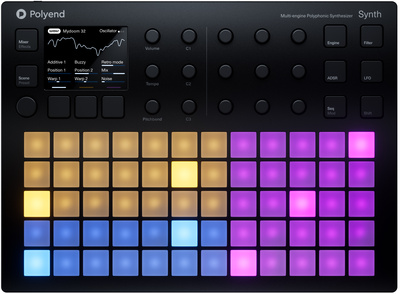
Polyend Synth: Multitimbral Polyphonic Synth With 8 Engines to Blow Your Mind
[12 November 2024] Don’t let the plain name fool you: Polyend Synth packs 8 synthesis engines into a tabletop grid-based instrument with 3 sequencers, chord modes, and more. Is it getting hot in here?
Polyend Synth
A year ago this month, Polyend launched its Play+, an upgrade of its popular groovebox with four new synth engines. It seemed like the obvious move for Polyend to put those digital synths into their own instrument, and that they have – in a sense. Three have made the crossover, with five more engines joining plus a bunch of other cool features. Folks, meet Polyend Synth.
Eight Synthesis Engines
A tabletop, grid-based instrument, Polyend Synth may look like its other grooveboxes but this one is definitely a “synth,” as the name suggests. First of all, there are no drums. It’s just synths and synths and synths, all the way down.
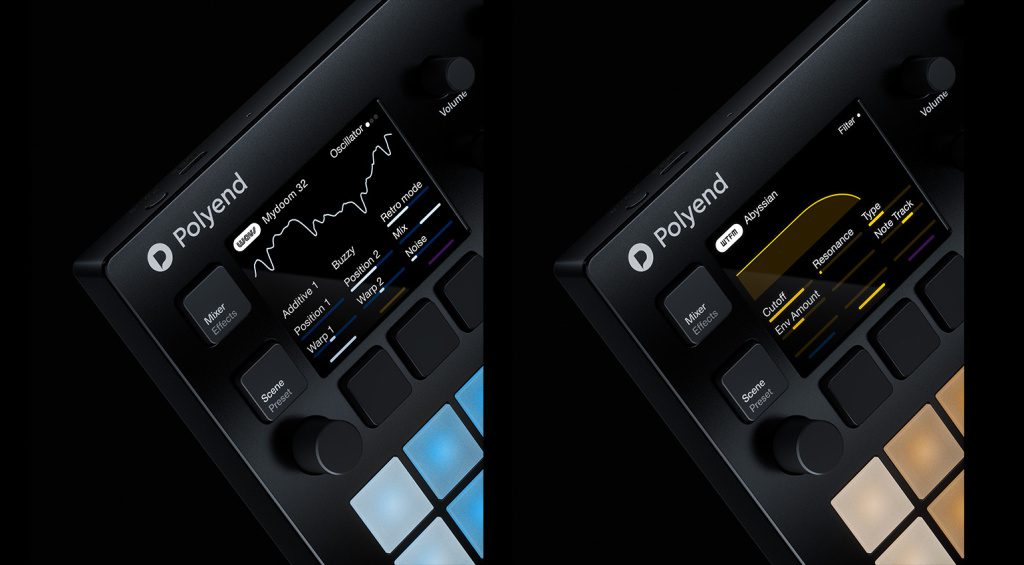
Here are all eight:
- PHZ: Eagle-eyed owners of the Tracker+ may have noticed that documentation mentioned PHZ but it was nowhere to be found in the instrument. It makes its debut here. What is it? It’s a phase distortion engine like the Casio CZ-101 and adds new PD algorithms.
- ACD: You may remember this one, a Roland SH-101-inspired synth, from the Play+.
- VAP: This virtual analog engine “channels the timeless warmth of the (Sequential) Prophet-6, encapsulating its spirit in a digital format.”
- PMD: This physical modeling engine apparently has roots in techniques from Mutable Instruments. Maybe it has some Rings DNA?
- GRAIN: As you might expect from the name, this is a granular synthesis engine and works with user-loaded samples. It also features a unique Burst mode for “rhythmically synced grain production.”
- WAVS: A two-oscillator wavetable engine, it supports importing of user wavetables and features a Retro mode for extra aliasing.
- WTFM: Wavetable and FM, together again.
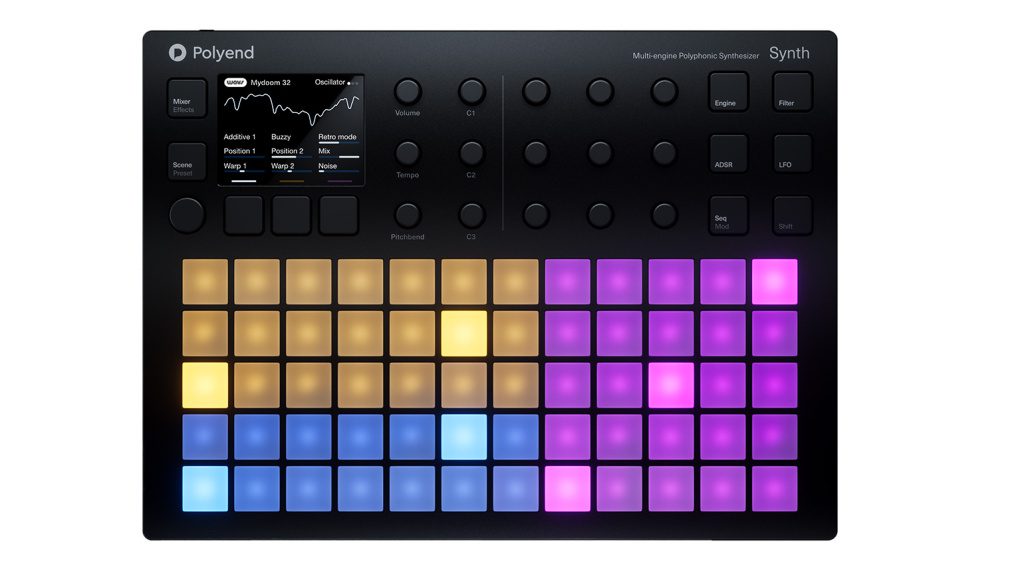
Eight Voices of Polyphony
Rather than use the engines one at a time, Polyend Synth invites you to control three at a time. Yes, it’s multitimbral, with eight voices of polyphony, plus a paraphonic mode in GRAIN.
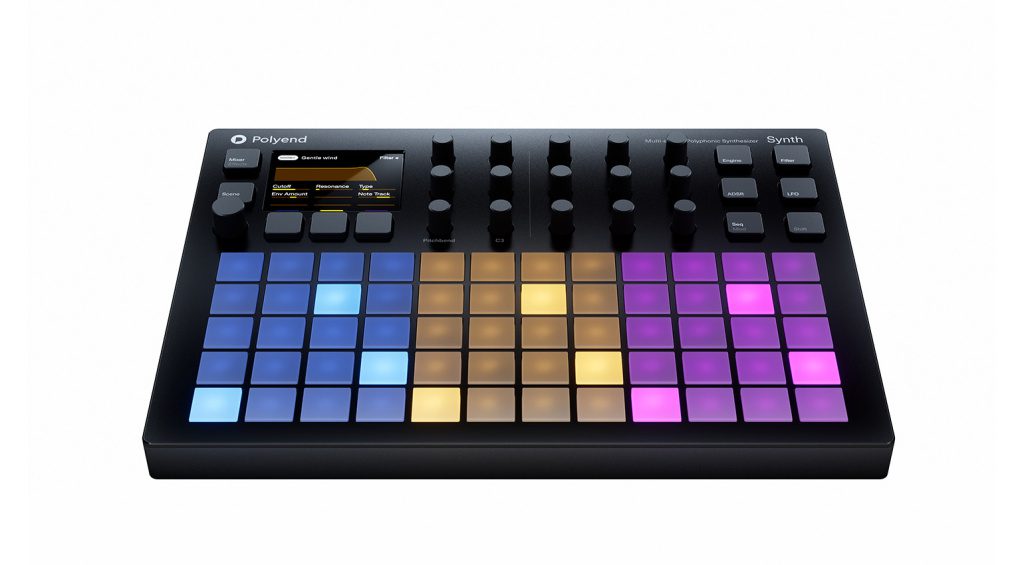
You can play the synth engines in a number of different ways: by assigning three across the 12 x 5 grid in Smart Grid mode and playing them with the pads with polyphonic aftertouch; via the three independent sequencers or arpeggiators that respond to playing in real time; or the three chord modes.
The chord modes sound particularly interesting. Two synth engines can be set to be “followers,” which change their notes according to the current chord played. There are scale locks to help keep everything within a set scale. The followers can react to changes even when using chord packs drawn from multiple scales.
Synth Effects
Polyend Synth also offers a selection of effects. These are grouped into three sections, modulation, reverb and delay, each with a selection of sub-effects, like chorus, phaser and flange under modulation and tape-style analog delay.
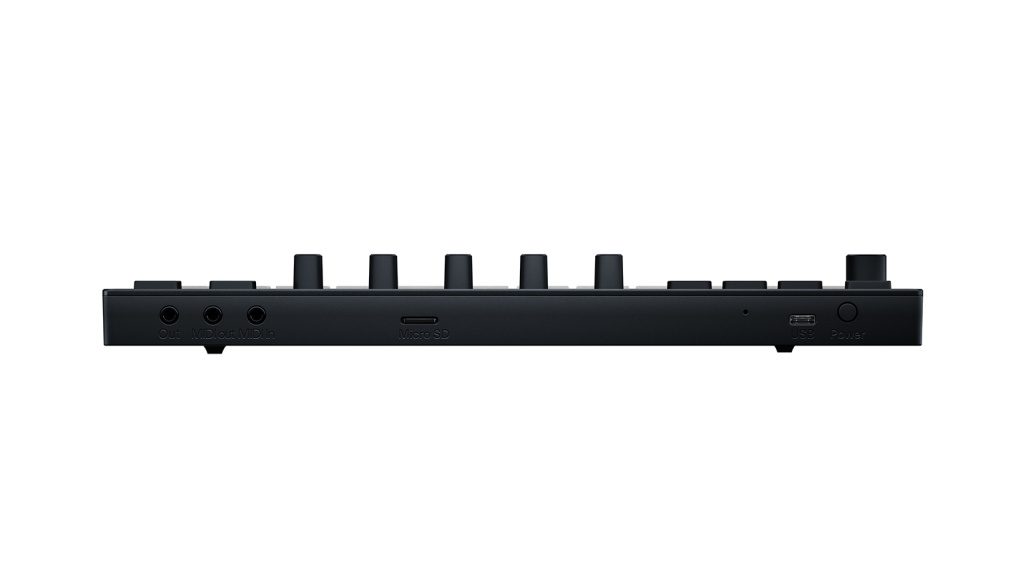
Price and Availability
Polyend Synth looks like a whole lot of synth fun in a single package. It also sounds great. Dare we say digital is the new analog?
“Our goal was to develop a device that merges complexity with true playability,” said Polyend’s founder, Piotr Raczyński. “Synth is designed for musicians who want an accessible but sonically rich experience.”
More Information
- Polyend home page
- All about Polyend
- All about synthesizers
- All about grooveboxes
4 responses to “Polyend Synth Update 1.3 Brings Crazy Sample-Based Engine, More”
 3,6 / 5,0 |
3,6 / 5,0 | 
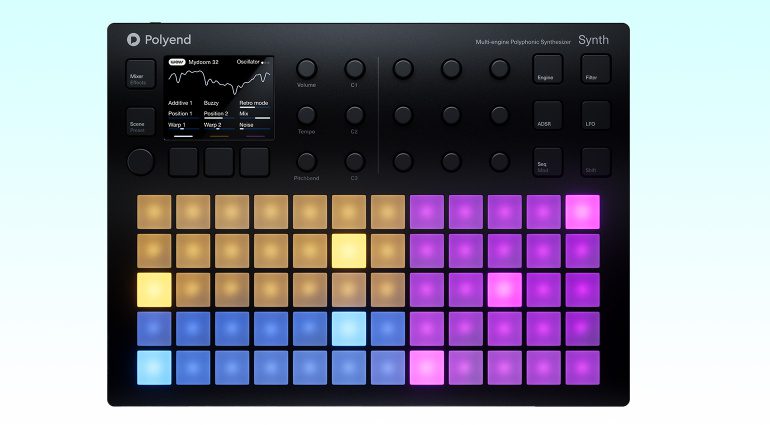





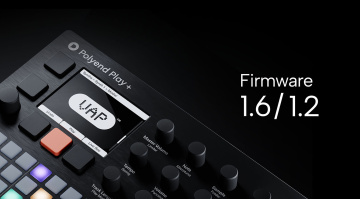

Better wait 6 months for them to release the Polyend Synth+ and buy that instead
nice!
At that price point, there’s a lot going for it (some useful videos already out there as a showcase). It could do.with some more outs to take full advantage of the multimbral functionality (either/or via USB and physical outs), and some extra voicing could be handy too.
How does this even matter when they will abandon this as well and simply move to the next half baked “project” product. That is what they have done with every release.
What exactly is your the problem you have with the Synth. I’m not aware of any major issues, and I’m quite happy with how mine works. This is the third significant update since the release, and the two engines (one of which is the result of a feature requests by users in the Polyend community) are a bonus on top of that.
I also find it a bit strange to complain that updates don’t matter because the company might abandon the product. If anything, updates matter more in that context, because the product they abandon will be better.